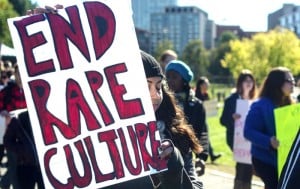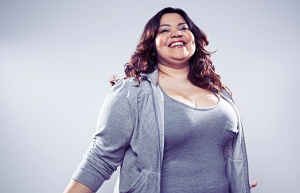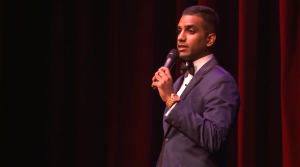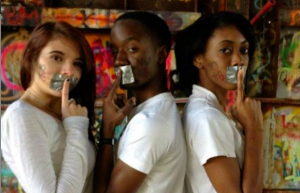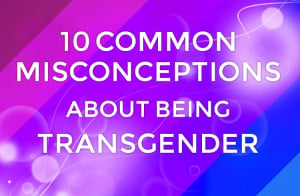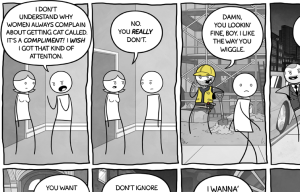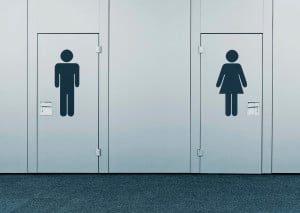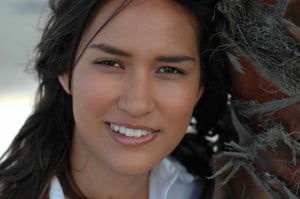
Source: Tony Toggles
It’s begun to edge into the feminist mainstream that gender isn’t everything we always thought it had been.
New words and terms seem to be popping up out of thin air, like “ambigender” and “agender” and “gender fluid,” and they crop up so fast that it’s hard to keep up!
What do all these terms mean, anyway?
One answer to this question is to simply say that gender is an abstract and infinitely complex idea that means something different to every person – which is legitimate and true.
But this doesn’t give us much of an idea about how queer genders are experienced by people.
So let’s explore some various, common ways in which gender is experienced by people in the trans community.
You may find it useful to look back to Sam Killerman’s article where he lists out a small dictionary of queer terminology since I, by and large, won’t be defining terms here. [Editor’s note: EF does not endorse Killerman. More on that in a minute.]
The purpose behind this article, rather, is to explain the various (stigmatized) ways in which gender is experienced by people who are not cisgender.
What IS Gender?
Before most people are ever aware of the existence of transgender and genderqueer individuals, they likely never make a second thought as to what gender is.
If asked to define it, they would have to take some time to really break down how they’ve heard it used and why.
In true feminist fashion, modern gender scholars have begun doing some heavy thinking about what it means to have a gender and have started unpacking the social meanings surrounding it.
The techniques that scholars are using to talk about gender and the way that they describe it tend to vary quite a bit, and there is work being done in how to best map gender (and sexuality, for that matter).
But the most common technique used is the idea of a spectrum – Sam Killerman’s dual-spectrum system being the most popular in the last couple years.
[Editor’s Note: The Genderbread person, though popularized and expanded on by Killerman, was initially a community effort by trans people created through various conversations. The original credit goes to Cristina González, Vanessa Prell, Jack Rivas, and Jarrod Schwartz.]
This diagram is far from perfect, but it still serves as a very good beginning point.
You can read a detailed explanation of how and why it works in another of Killerman’s articles, but here I’ll assume that it’s understandable just by looking at it.
It’s also useful to note that I will be using terms in this article in the same way Killerman does here – for instance, gender identity will be described in terms of woman-ness or man-ness, expression in terms of more masculine or more feminine, and bodily sex in terms of male-ness or female-ness. We will not be talking about attraction.
I would also like to express that, like biological sex and gender identity, gender expression and gender identity are also independent of one another. I will be discussing genderqueer identities and genderqueer expressions, but it’s imperative to remember that the two need not go together.
At the end of the day, it’s not uncommon that people with genderqueer identities express cisnormatively for simplicity’s sake.
Trans people are people, too, and for some trans people, being harassed, mocked, or fired isn’t worth expressing themselves – and this doesn’t make their identity or experience any less legitimate.
Experiencing a Common Gender
It’s apparent by looking at the Genderbread model that our society exists within the confines of the genders of “man” and “woman.” Considering these seem to be the most common, it’s an understandable place to start.
I’m not going to spend too much time on these since this category largely houses the cisgender population, but it deserves some note in order to reinforce that binary transgender people fit into this category as well.
That is, a person who takes steps to change their body’s sex and expression toward being more male/female when they were assigned the other one at birth.
Because these individuals are actively breaking down gender expectations and norms, their gender is inherently queer – even if they eventually are indistinguishable from a cisgender person.
Binary trans people, in general, don’t feel terribly different about their gender than a cisgender person would about theirs, particularly those who are perceived (via bodily sex and expression) to be congruent with their gender.
People who are perceived this way experience society through the same lens as a cisgender person, which is one of the reasons that it is appropriate to allow binary trans people to exist in spaces designed for their gender.
Experiencing a Unique Gender
Genderqueer, as it is, refers to a person who uses various gendered techniques from across partitions in order to either express themselves, prove a political point, or both.
A genderqueer person can have any gender identity, but the mixture and way of combining of that, their gender performance/expression, and their bodily sex is queered to the point that the only way they can be definitely described is by saying that they’re “not cisheteronormative.”
Because genderqueer folks are so diverse and difficult to describe, “genderqueer” is really the only available term that people in this identity use since it doesn’t make sense to try and group them together any more than that.
However, I have received some praise from various members of this community for coming up with the term “personal gender,” which is meant to be used for individuals whose identities are complex or unique enough that creating a new label would be excessive, while also acting as a more humanizing and legitimizing alternative to the idea of an “other” gender box.
Some individuals (especially those that use a queer gender expression for political, rather than personal, reasons) may also go by the descriptor of “genderfuck,” which also doubles as a verb (meaning, “taking advantage of gender ambivalence and unexpected gender roles, especially in order to make people conscious of and rethink gender expectations.”)
The term Genderqueer also tends to act as a catch-all for non-binary people (more specific than “trans” but less specific than, say, “agender”) since, even if the person identifies with one of the descriptions I’ve laid out below, they still have a gender that doesn’t have a mainstream niche within our society, bringing to attention the rather obvious etymology of the term.
Pronouns for genderqueer folks, like the rest of my descriptions about them, are difficult to describe concisely due to the inherent diversity in the demographic, but some generally preferred pronoun sets include gender neutral pronouns, such as “they/them/theirs” or “xe/hir/hirs,” rolling pronouns (which involves changing the persons pronoun each time that one comes up in a sentence – for example, “She went to the store, and on the way there he ran into an old friend who asked hir how they were doing”), or not having a preference toward any pronoun in particular.
Like with every person, though, even if they appear cisgender, it is always in best taste to ask what pronoun the person uses instead of assuming.
Experiencing Multiple Genders
Some trans people describe their relationship to gender as experiencing multiple genders or pieces of many genders. Examples of common labels that fall into this category are multigender, ambigender, bi/trigender, and pangender.
“Multigender” is generally the agreed-upon umbrella term for this group of people.
Essentially, this experience manifests itself in one of two ways – in the first way, some individuals explain that they feel masculine/manly some days and feminine/womanly other days.
Each individual has their own way of expressing (or not expressing) this, but it wouldn’t be unusual to see a multigender person express their gender with bowties and sport coats one day, and a gorgeous, sheen dress the next.
Being able to move between genders in this way is known as fluidity.
Many prominent gender scholars today argue that gender is always fluid for every person to some degree over time. But gender fluid people, specifically, experience this fluidity in a more polarised manner and in societally uncouth ways, but embrace this attribute of themselves regardless.
If we were to plot this on the Genderbread Person, it would look like a slider that moves freely from one area to another on either or both of the spectrums, creating a unique combination in both places.
Pronouns and gender markers provide an interesting challenge to fluid multigender people.
Many people in this category recognize that they add a particular complexity to pronoun use and begrudgingly accept being misgendered (being referred to as “she” when xe is feeling and dressing masculine) even if xe dislikes it and finds it hurtful.
Every multigender person has likely found or is actively looking for their own best strategy to navigate this situation, but it’s always best to ask a person about their pronouns and accept the solution that they present to you.
Remember, no matter how hard it is for you to remember a person’s pronouns, it’s always harder to be misgendered.
The second way in which multigender people experience genders is by experiencing them simultaneously.
People in this gender situation explain it as you might expect, by describing it like “I feel like a boy and a girl.”
The way that non-fluid multigender people tend to express their gender identity is not immensely different than genderqueer expression.
In fact, by using the definition that I presented in that section, the two are denotatively equal (but connotatively different).
It is also common for non-fluid multigender people to express similarly to fluid multigender people, expressing different genders on different days according to their taste.
Experiencing No Gender
In complete inverse, there are other non-binary people who describe their relationship to gender as completely null.
This has been described as just not having any particular attachment to one gender or another, or that the entire idea of having a gender seems completely foreign and intangible to them.
Some of the common identities that go along with this experience are “agender” and “nongender.”
Expression is a particularly unique challenge for genderless people.
One person described to me that every morning when this person gets dressed, a conscious decision is made to what sort of gender expression will be given off. The person took into account that dressing one way would make social interactions slightly different than if a differently gendered article of clothing was worn instead.
More than less, though, a genderless expression tends to default to the “queer aesthetic,” a collection of various styles commonly sported by members of the queer community, including vibrantly dyed hair, undercuts or mohawks, avant garde makeup techniques and colors, and genderqueer clothing combinations.
Really, the queer aesthetic simply involves any clothing or accessory that the individual finds appealing regardless of its apparent gendered state, marketed demographic, or stigmatized status.
Traditionally, pronouns for genderless people tend to be gender neutral pronouns (surprise, surprise). These, again, include “they/them/theirs,” “xe/hir/hirs,” or completely foregoing pronouns altogether and using the person’s name or title in its place.
So What Does This All Mean For Cis People?
Unless you are the type of cisgender scholar who is actively dissecting the philosophy and purpose behind what it means to have a gender (like Cressida Heyes, for example), then it’s really not imperative for you to know every single term and be able to recite them at will.
In fact, these identities weren’t created with cis people in mind at all.
You can stack it up to privilege that you don’t need to know what all of these identities mean because your gender identity is commonly understood and accepted throughout all of society.
There are a diverse number of terms and definitions for various gender situations because people experience gender in a various and diverse number of ways.
These all exist so that trans people have a community that understands and validates them, and where they can build their identity and share their experiences in a supportive, empathetic environment instead of being consistently told that they do not exist.
Many cisgender people get upset when they see so many “strange words” popping up that they don’t understand. And it’s common (even within supposedly feminist groups) to see cis people making fun of the queer dictionary by creating arbitrary, nonsensical identities in order to mock trans people.
Don’t do this. Ever.
The reason behind this article is to explain the various (stigmatized) ways in which gender is experienced by people who are not cisgender.
So what can cis people take away from this piece?
Hopefully, your understanding of these various non-binary identities runs deeper now and you can take that education to the rest of your world.
But beyond that, you can take away an understanding that gender is infinitely more complex than you have ever had to understand.
You can take away that when a genderqueer, non-binary trans person comes out as a gender fluid, bigender individual that they are not to be mocked, but instead respected, for they have developed a complex understanding of a complex idea for self-preservation purposes than many people have not needed to explore.
Trans people (including non-binary people) are legitimate humans living legitimate experiences and have legitimate stories to tell about the intricate ways that they have experienced gender.
It is in every feminist’s best interest to listen and pay attention to trans people (all trans people) in order to help further the betterment of society and help shape a world where people of all genders are respected equally.
[do_widget id=”text-101″]
Kaylee Jakubowski is a Contributing Writer for Everyday Feminism. She is a trans, Queer feminist with specific interests in ecofeminism, anti-imperialism, Queerness, and statistical approaches to social justice work. Xe is pursuing a B.S. in Statistics with a minor in Women’s & Gender Studies. Feel free to Like her Facebook Page, follow her on Tumblr, or see what she’s up to musically. Read her other articles here.
Search our 3000+ articles!
Read our articles about:
Our online racial justice training
Used by hundreds of universities, non-profits, and businesses.
Click to learn more
Most Read Articles
- « Previous
- 1
- …
- 30
- 31
- 32






